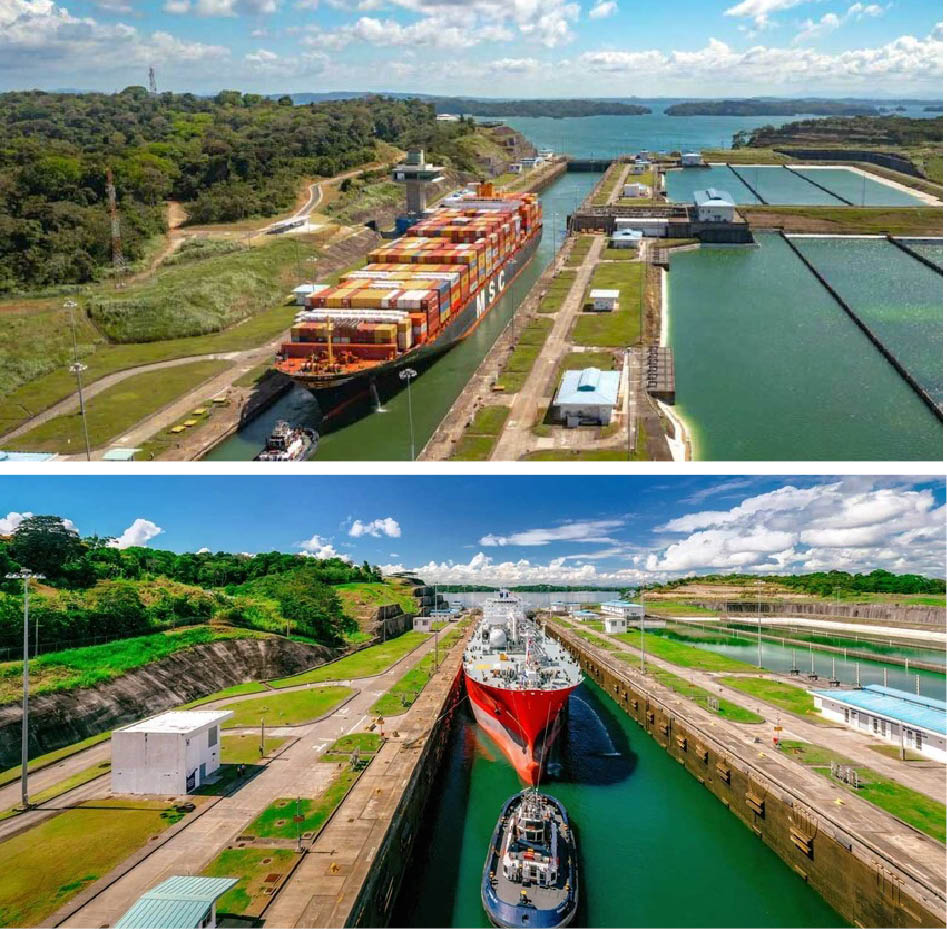NEW DELHI
As the Panama Canal will have restrictions on its daily vessel transit for another 10 months amidst a prolonged drought, experts associated with the waterway say this is not good news.
Information reaching the national capital here indicate extending the restrictions would allow the canal some room to preserve water before the next rainy season. This is a peak season because December is approaching and merchandise for Christmas is moving fast.
Water levels in the canal have not recovered enough and limits on daily transit and vessel draft will stay in place for the rest of the year and throughout 2024, the waterway’s authority has said. This is an alarming situation.
The global waterway handles an estimated 5% of world trade. If the situation remains the same, there will be expensive freight costs ahead of the approaching Christmas season.
Some of the shipping companies are paying astronomical charges to beat the congestion, says a report in Business Insider. “A $2.4 million price tag was the winning bid for an auction held by the canal authorities for vessels to secure slots to sail through the waterway,” the newsmagazine said in a report. The containers are stuffed with items including furniture, building material, and consumer goods. Some carry oil, gas, and grain. The Panama Canal is a vital gateway for global shipping. An estimated $270 billion worth of cargo passes along the canal each year en route to over 170 countries.
Information from cargo houses in Delhi say many Indian consignments are stuck after the authorities imposed restrictions on vessel weights and daily traffic. Currently, the direct impact to US manufacturers, retailers and consumers appears to be minimal right now, but experts say the potential for broader disruption is growing.
Officials of the Ministry of Commerce and Ministry of External Affairs—claim those in the know—are in touch with the vessels with Indian flags. It was not immediately known what would be the fate of the vessels carrying Indian cargo, and whether the Indian vessels will take detours in a bid to avoid delays.
Everstream Analytics, a global giant that analyses risk scores and predictive insights, said in a report that as of mid-August, there were about 135 ships waiting at both ends of the canal, up from 29 the month before. The ships waiting are typically gas tankers or bulk carriers. And as the waiting period continues to grow, the bottleneck will impact service reliability and cause shipment delays across the United States and Europe, according to Everstream Analytics, a top company focussed on global supply chain.
Most of the ocean carriers have had to reduce the load on their ships, according to information reaching New Delhi. But so far, that hasn’t had a significant effect on schedules and freight rates.
Ilya Espino, the deputy administrator of the canal, was quoted by Reuters as saying there is an increase in the number of arrivals and that it is a matter of serious concern. Panama is about halfway through its rainy season right now. What is worse is that this is one of the wettest countries in the world and the region is having one of its driest seasons on record. And the lack of abundant rainfall is leading to lower water levels and putting a squeeze on the canal, a critical international route.
But the crisis is serious. And any increase in maritime choke points could spell trouble for the global supply chain networks which have run smoothly since pandemic-era upheavals. And these bottlenecks have global ramifications.
“When you have a blockage in one part of the supply chain, the rest of the supply chain is automatically affected,” an official told CNN. Now, the Panama Canal traditionally relies on water from neighbouring freshwater lakes. The mechanism works with a lock system that pushes some 50 million gallons of water to float each vessel through the canal. The CNN said normally, at this time of year, the lake levels are increasing. However, rainfall in Panama this spring and summer has been the lowest since the turn of the century, Jon Davis, chief meteorologist at Everstream Analytics, was quoted by the news channel.
Experts, however, say the freshwater lakes are not going to decline

